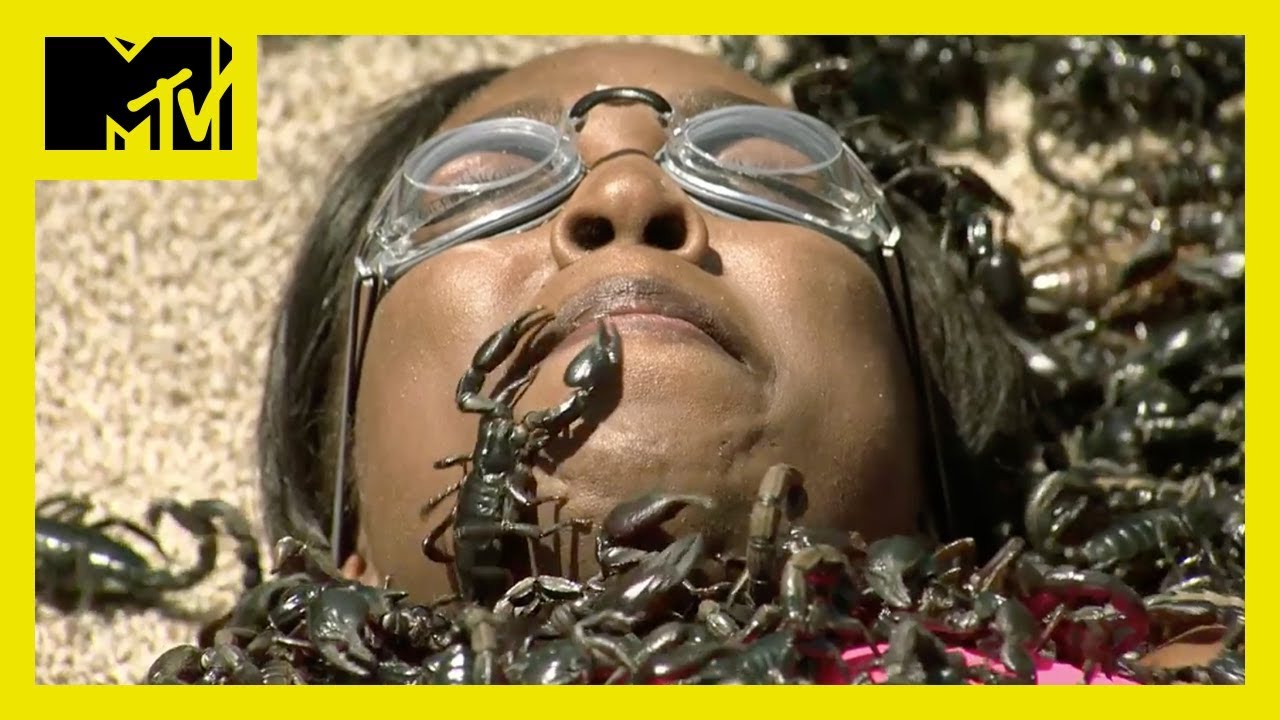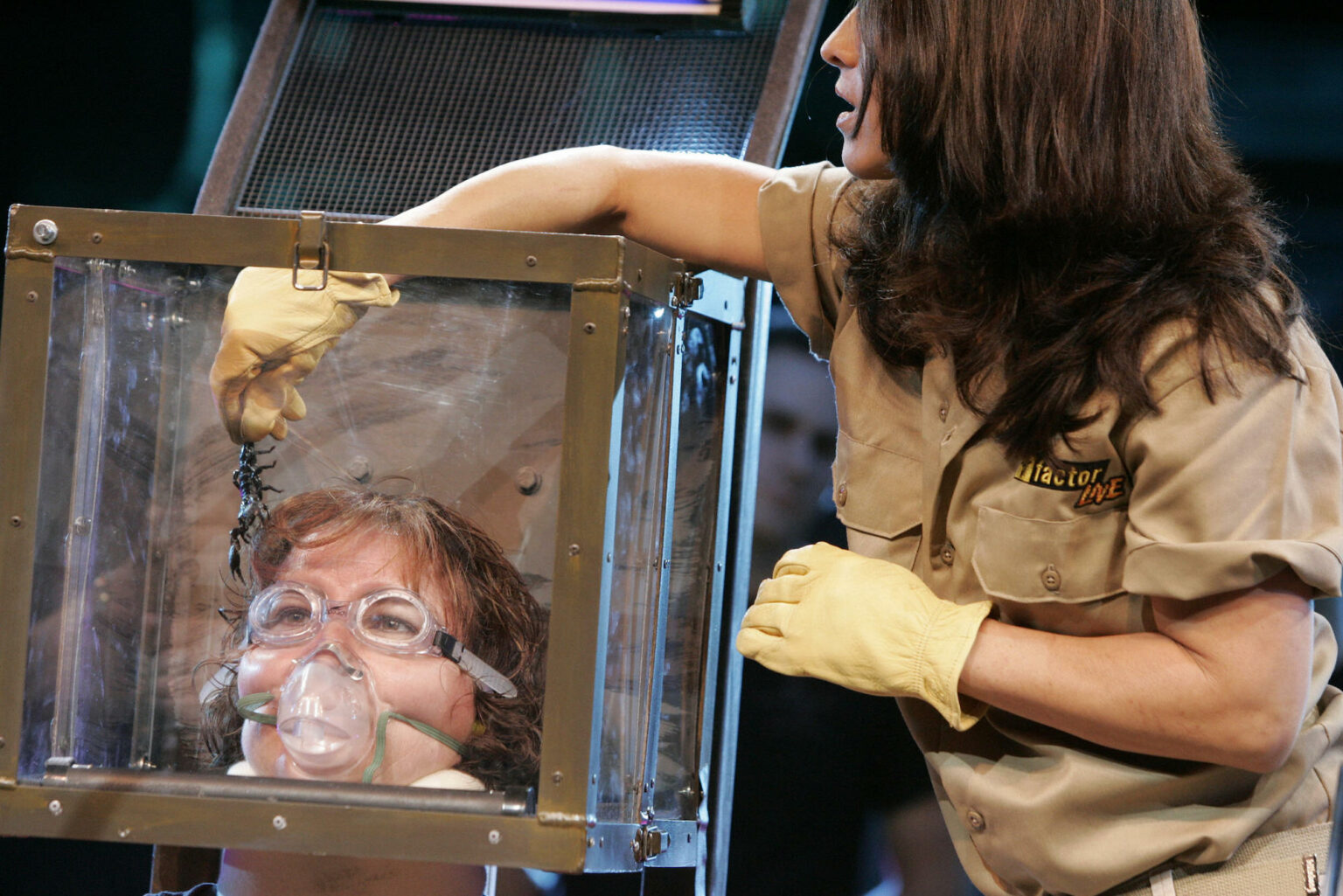Reality TV shows like Fear Factor and Wipeout have been thrilling audiences for years with their heart-pumping stunts and challenges. But with all the excitement, have you ever wondered if anyone has ever gotten hurt on these shows? Well, the answer is yes. In fact, contestant Lebo Babe suffered serious injuries during a Fear Factor stunt, losing half of her hair, suffering a concussion, and being badly bruised. This raises questions about the safety measures taken on these shows and whether or not they have faced legal repercussions. Let’s dive deeper and explore some of the most intriguing questions about these popular reality shows.

Fear Factor: Was it ever dangerous for contestants?
Fear Factor was a reality television show that was known for its dangerous stunts and challenges. While many contestants were willing to push themselves to the limits for a chance at the prize money, there were instances where things went wrong. One such incident occurred during the show’s sixth season when contestant Lebo Babe suffered injuries during a stunt.
Babe was participating in a challenge where contestants were being dragged behind a 4×4 over sand dunes. Unfortunately, she ended up losing half the hair on her head, suffered a concussion, and was left badly bruised. This accident left many viewers wondering about the safety protocols in place during the show’s filming.
It is worth noting that this was not the only time that a contestant was injured during the show’s run. There were other instances where contestants suffered from minor injuries such as cuts and bruises. However, the incident with Babe was one of the more severe ones.
Overall, while Fear Factor was a popular show that provided entertainment to viewers, it is important to consider the potential risks involved in filming such dangerous stunts. The safety of the contestants should always be a top priority, and measures must be taken to ensure that they are not put in harm’s way.
>> Must read Has anyone been injured filming Jackass?
Lawsuits Against Fear Factor: Have They Ever Happened?
During its initial run on NBC, Fear Factor faced a lawsuit from a viewer who demanded $2.5 million in damages. The viewer claimed that he became disoriented while watching the show’s 100th episode and injured himself as a result. This lawsuit is an example of the types of legal challenges that can arise from controversial reality TV shows like Fear Factor. Although the show’s producers maintain that they take extensive safety precautions, it’s impossible to prevent every potential risk, and accidents can happen. Despite this lawsuit, Fear Factor continued to air for several more seasons, demonstrating that the show was able to weather legal challenges and other controversies.
Trending now – Does blading hurt in WWE?
Safety Concerns: Are Wipeout Contestants at Risk of Serious Injuries?
Wipeout, a popular game show that aired from 2008 to 2014, featured contestants completing various obstacle courses in hopes of winning a cash prize. However, the show wasn’t all fun and games, with reports of contestants getting seriously injured during filming. In fact, Michael Paredes suffered a heart attack after taking a fall on the Wipeout course. Although the official cause of death was a heart attack, many speculated that the fall may have contributed to his death. This isn’t the first time a contestant has experienced health issues while on the show. In 2009, Tom Sparks was rushed to the hospital after experiencing knee pain and shortness of breath. These incidents raise concerns about the safety measures in place during filming and the potential risks contestants face while participating in the show. It’s important for production teams to prioritize the safety of their contestants to prevent any further incidents from occurring in the future.

The Impact of Fear Factor on Animal Welfare.
Fear Factor, a popular television show that featured contestants performing various stunts for cash prizes, has received its fair share of criticism from animal welfare organizations. One such organization, the American Humane Association, accused the show of harming animals during the stunts. The organization claimed that the show’s producers did not take adequate measures to ensure the safety and well-being of the animals used in the stunts.
Some of the stunts involved animals such as rats, snakes, and spiders. The American Humane Association alleged that these animals were subjected to unnecessary stress and suffering during the filming of the show. In response to the allegations, the producers of Fear Factor stated that they took animal welfare very seriously and that they had followed all necessary precautions to ensure the safety of the animals.
Despite the controversy, Fear Factor continued to air for several seasons. However, the accusations of animal harm did lead to some changes in the show’s format. For example, in later seasons, the show used fewer animals in its stunts and often used computer-generated imagery instead.
Overall, while Fear Factor did face criticism from animal welfare organizations for its treatment of animals during the stunts, the show’s producers maintained that they took all necessary precautions to ensure animal safety.
What is the compensation for Fear Factor participants?

Fear Factor was a popular reality show that aired from 2001 to 2012. The show revolved around contestants performing dangerous and sometimes disgusting stunts to win a cash prize. The prize money for each episode was $50,000, which would be split among the contestants who successfully completed the tasks. This was a significant amount of money, and many participants were willing to put their safety on the line for a shot at the prize.
Joe Rogan was the host of Fear Factor for most of its run, and he was a well-known comedian and UFC commentator before taking on the role. It’s said that he initially accepted the Fear Factor job to find material for his stand-up comedy routines. However, the show’s popularity helped to bring more attention to his comedy career and increased his fan base.
It’s worth noting that the contestants on Fear Factor were not paid a salary for their participation. They would only receive the prize money if they successfully completed the challenges. This meant that many participants left the show empty-handed, regardless of how much effort they put into the stunts.
Overall, Fear Factor was a high-risk, high-reward show for its contestants. While the prize money was significant, the physical and mental toll of the challenges was also substantial. Nevertheless, many people were willing to take on the challenge for a shot at the cash prize and the chance to be on national television.
Fear Factor’s Edible Challenges: Are They Actually Genuine?
Fear Factor is a show that has been known to push contestants to their limits, making them perform stunts that seem impossible. One of the most common questions that people ask is whether the food that the contestants eat on the show is real. It may seem like the food is fake, made out of something like gelatin or plastic, but the truth is that it is all real.
According to The Things, all the stunts on Fear Factor are quality and safety checked by professionals. This means that every stunt, including the eating challenges, is perfectly safe for the contestants. So, whether the contestants are eating sheep’s eyes or bathing in cow’s blood, they are not putting themselves in any danger. The show takes great care to ensure that everything is safe for the contestants, and that includes the food challenges.
It is important to note that while the food challenges on Fear Factor may seem extreme, they are not harmful to the contestants. Eating sheep’s eyes or cow’s blood may not be something that most people would want to do, but it is not dangerous. The contestants are not at risk of getting sick or injured from the food challenges, and they are always supervised by medical professionals.
In conclusion, the food challenges on Fear Factor are real, but they are also safe. The show takes great care to ensure that all stunts, including the eating challenges, are quality and safety checked by professionals. So, if you ever find yourself watching Fear Factor and wondering if the food is real, you can rest assured that it is.
The recently deceased American Idol contestant – Who was it?
C.J. Harris, a talented singer-songwriter and former contestant on the popular singing competition show, American Idol, has tragically passed away at the age of 31. According to reports, Harris died on Sunday after suffering from an apparent heart attack in his hometown of Jasper, Alabama. The news of his untimely death has left many fans and fellow artists in shock and mourning.
Harris competed on the thirteenth season of American Idol and was known for his soulful voice and authentic performances. He impressed the judges and viewers alike with his renditions of classic songs by artists such as Ray Charles and Sam Cooke. Although he did not win the competition, he gained a devoted following and continued to pursue his passion for music after the show.
The cause of Harris’ heart attack is not yet known, but his family has expressed their gratitude for the outpouring of love and support they have received during this difficult time. His death is a tragic loss for the music world, and he will be remembered as a talented artist who touched the hearts of many.
Uncovering the Safety Record of Wipeout: Have Contestants Ever Experienced Serious Injuries?
Wipeout is a game show that has been popular for its wacky and outrageous challenges, but have any of the contestants ever gotten seriously hurt while competing? Unfortunately, the answer is yes. In fact, there have been instances where contestants have suffered severe injuries and even death while participating in the show.
One such incident occurred in 2020, when Michael Paredes, a contestant on the TBS revival of Wipeout, suffered a heart attack after taking a fall on the course. Although the show’s official statement claimed that he was immediately attended to by the on-site medical staff, he passed away shortly after being transported to the hospital. This tragic incident raised questions about the safety measures taken by the show’s producers and the risks that contestants are exposed to.
This was not the first time that a contestant had suffered a serious injury on Wipeout. In 2009, Tom Sparks was rushed to the hospital after experiencing knee pain and shortness of breath while on the show. Although the cause of his injuries was not immediately clear, it was later revealed that he had suffered a stroke as a result of a pre-existing medical condition.
While these incidents may be rare, they serve as a reminder that the stunts and challenges on game shows like Wipeout can be dangerous and potentially life-threatening. It is important for producers to take all necessary precautions to ensure the safety of their contestants and to be transparent about any risks involved.
Breaking the Gender Barrier: Can Women Win Fear Factor?
Fear Factor was a popular reality show that aired for six seasons from 2001 to 2006. The show was known for its extreme stunts and challenges that tested the physical and mental limits of its contestants. Many viewers might have wondered if a woman could ever win the show, given the grueling nature of the tasks.
However, Jeanette Jenkins proved that women could be just as tough as men when she became the first female winner of Fear Factor. She competed in the show’s second season and emerged victorious, taking home the grand prize of $50,000. Jenkins was a fitness trainer who had prepared herself both mentally and physically for the challenges ahead.
Her victory was a significant milestone for the show, which had previously been won only by male contestants. Jenkins proved that Fear Factor was not just a test of strength, but also required strategic thinking and endurance. Her win inspired many women to audition for the show in the future and opened up more opportunities for female contestants to showcase their skills.
In conclusion, Jeanette Jenkins made history as the first woman to win Fear Factor, proving that women could compete and win against their male counterparts. Her victory was a significant moment for the show and inspired many women to pursue their dreams of competing in reality shows.
The End of an Era: Exploring Why Wipeout Stopped Filming.
Wipeout was a popular American game show that had contestants competing in various physical challenges to win a cash prize. However, the show stopped filming after a tragic incident that occurred on the set. In November, a contestant named Michael Parades suffered a heart attack while running the new course, which led to his unfortunate death. The incident caused a significant impact on the show’s production, leading to a halt in filming.
Before the incident, there were already rumors about the show’s future, with talks about not allowing night shoots anymore. The Wipeout Zones, where the contestants faced the most challenging obstacles, were also a concern. However, those rumors would eventually dissipate, and the show would continue as usual.
The death of Michael Parades was a severe blow to the show’s production team and fans. It also raised questions about the safety measures taken during filming. Investigations were carried out, and it was revealed that Michael had an undetected heart condition. The show’s producers then took the necessary steps to improve the safety conditions on the show but ultimately decided to stop filming the show.
The decision to stop filming Wipeout was a difficult one, but it was the right thing to do. The incident was tragic, and the production team did not want to risk the safety of the contestants. It was a reminder that safety should always be a top priority, and the show’s producers did the right thing by putting an end to it.
While reality TV shows like Fear Factor and Wipeout may provide exciting and thrilling entertainment, they are not without risks. Contestants have been seriously injured, sued the show, and even faced harm to animals. In one instance, Fear Factor contestant Lebo Babe suffered physical injuries and hair loss during a stunt. It’s important to remember that these shows are not always as harmless as they may seem.



